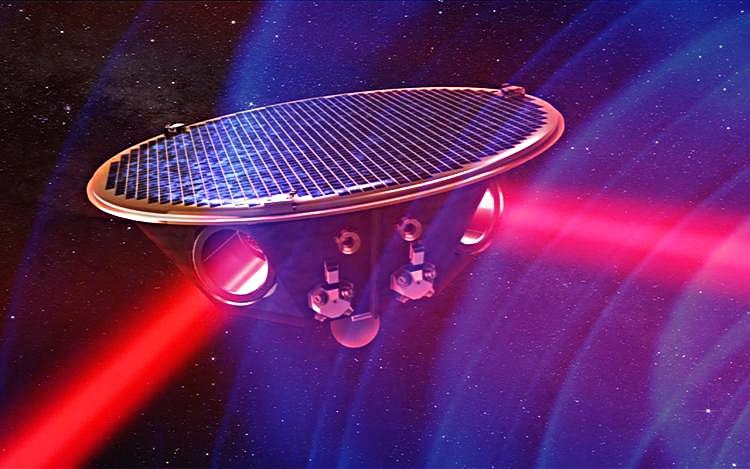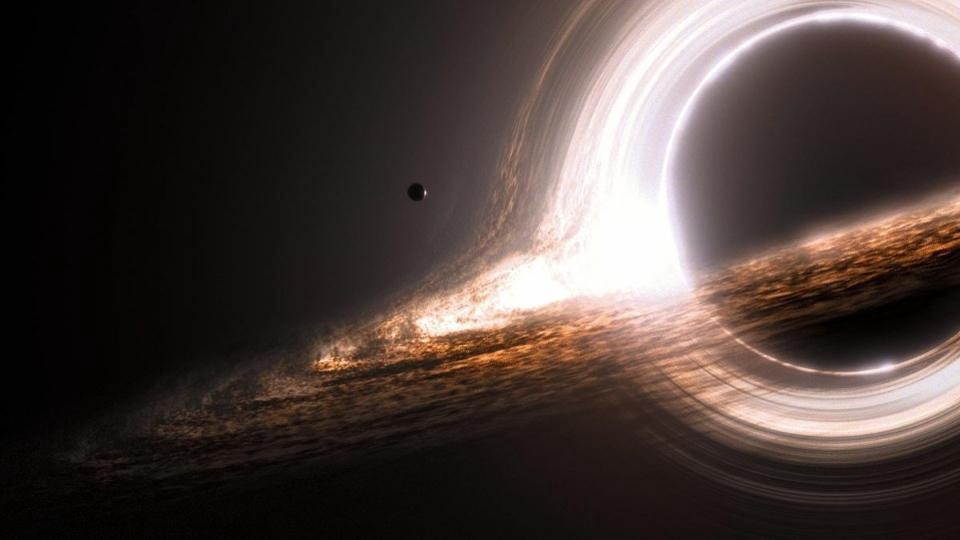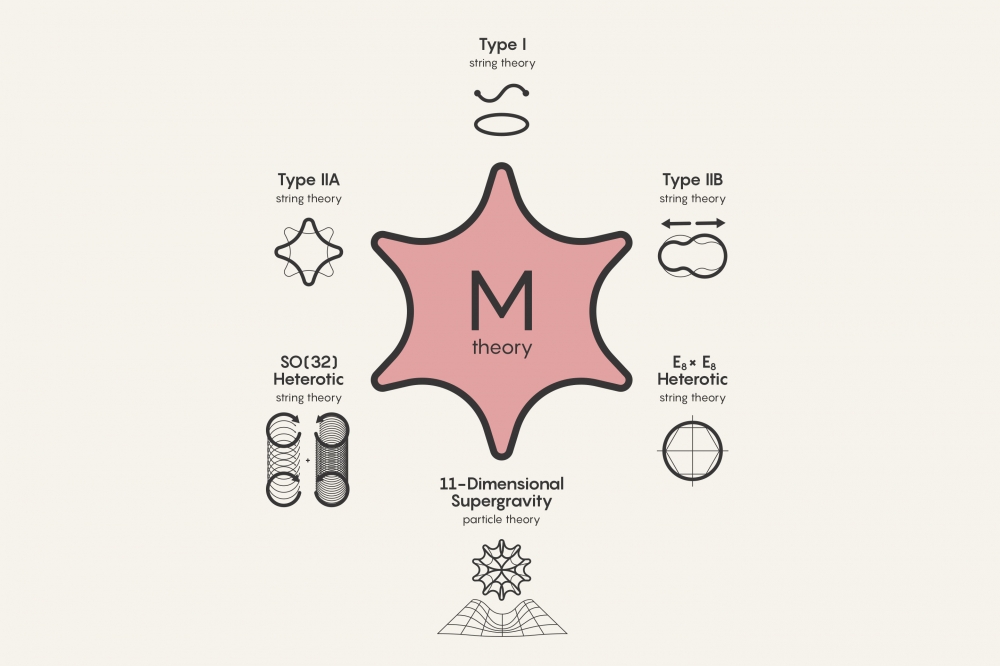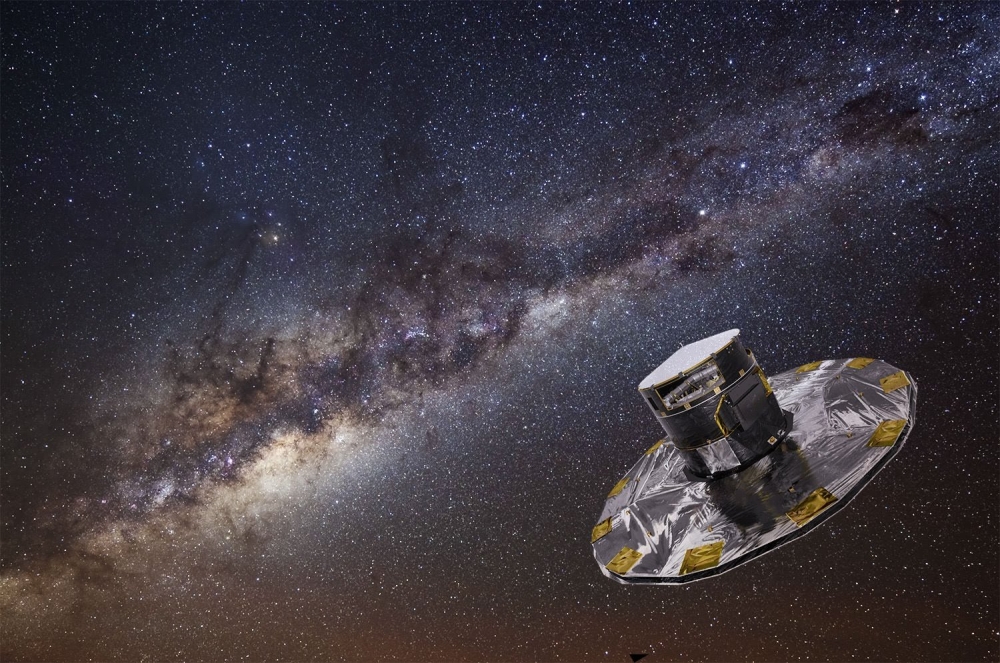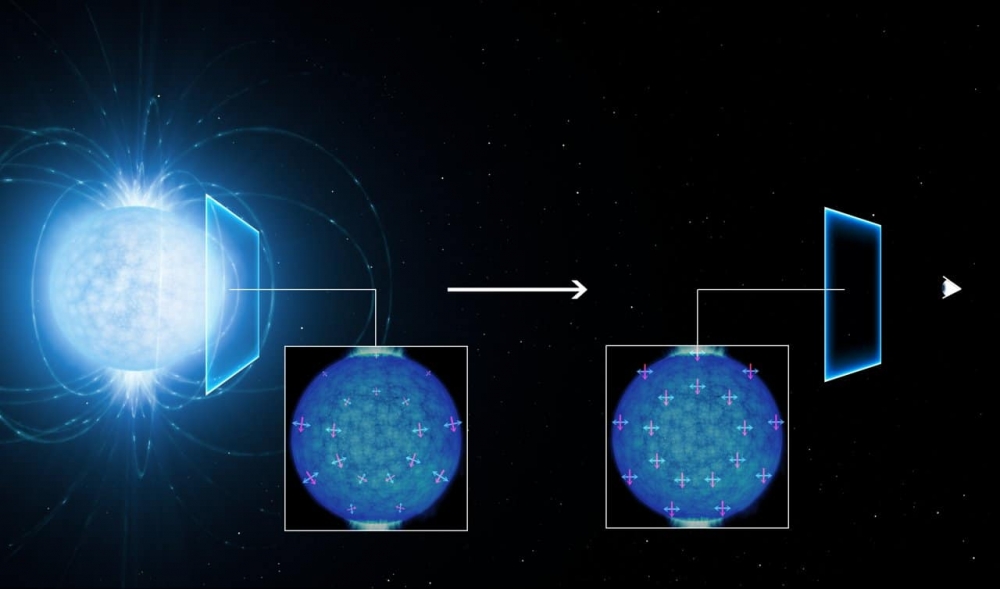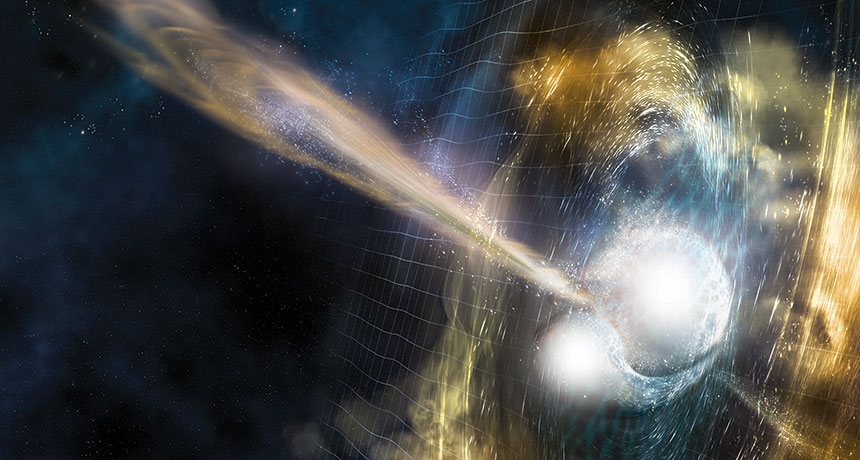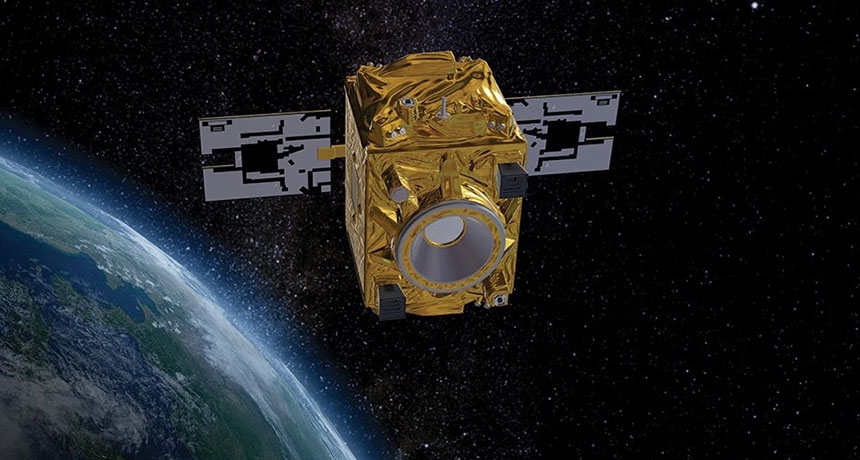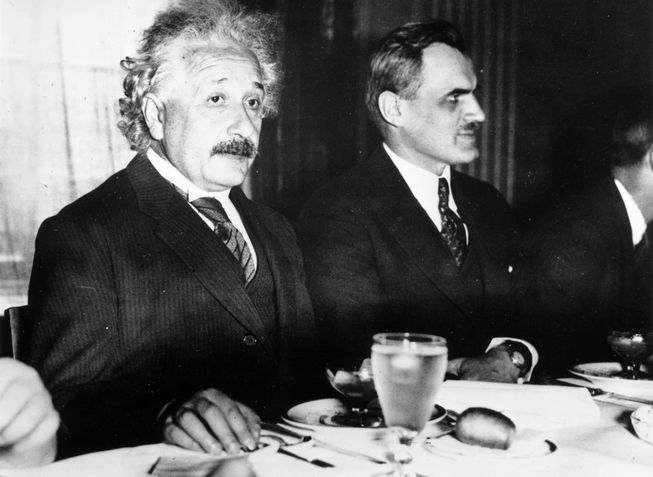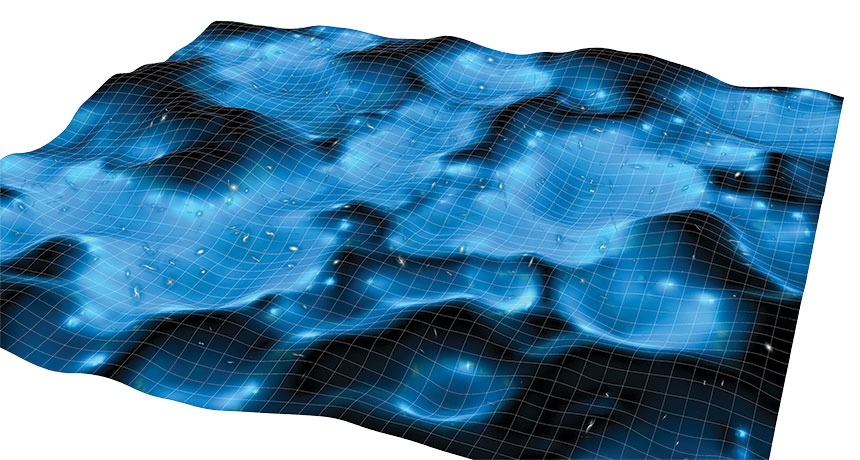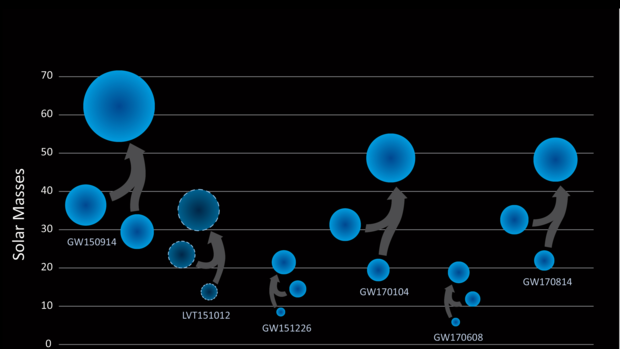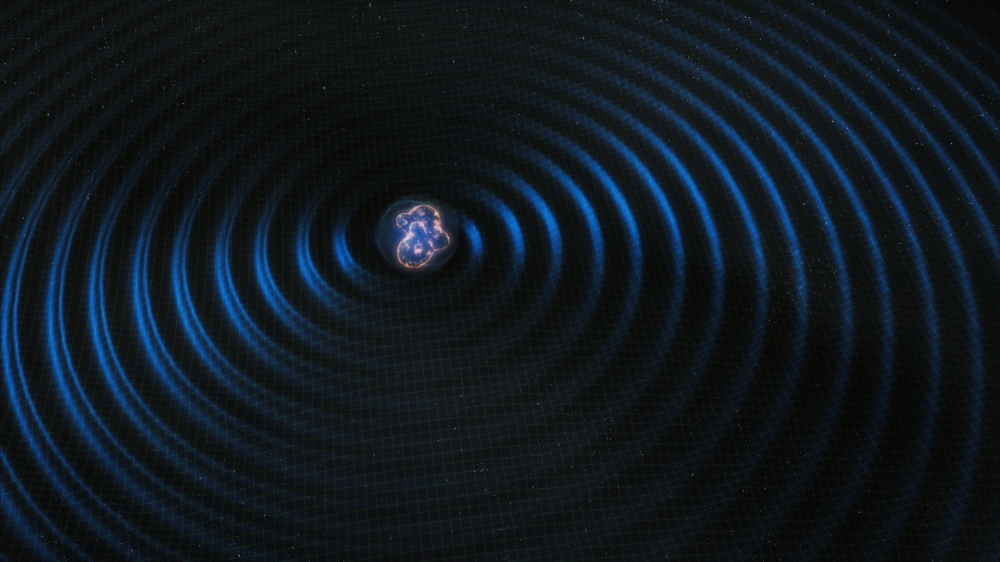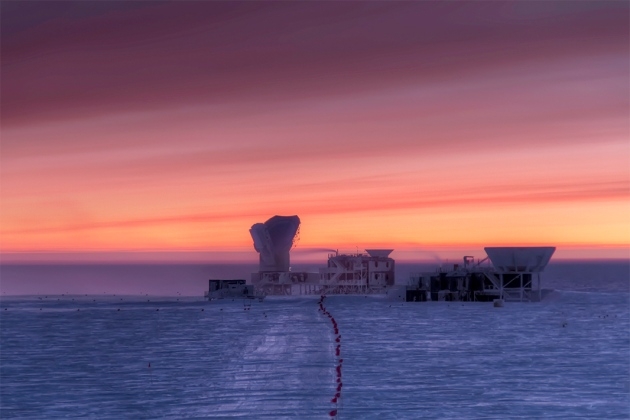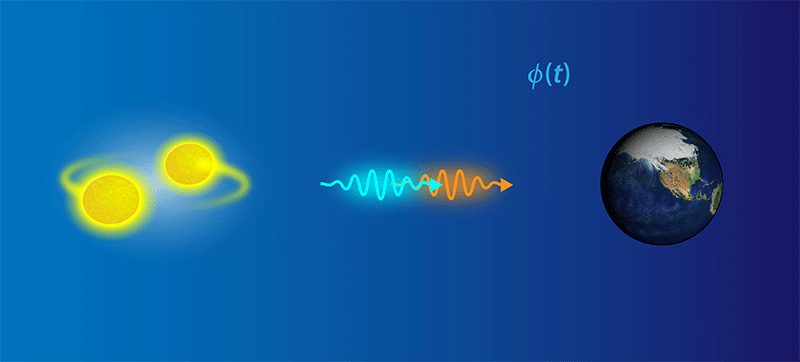
Recent observations of a neutron star merger 130 million light years away found that gravitational waves and light from the event arrived at Earth within 2 s of one another. This indicates that the two fundamentally different types of wave travel at the same speed to within 1 part in 1015
. The finding constrains several theories that explain the accelerated expansion of the Universe using a modified version of general relativity in which gravity couples to a time-dependent scalar field, 𝜑(t)
. In such theories, the value of the scalar field needed to explain acceleration would lead to gravitational waves (orange) that travel at significantly different speeds from that of light (light blue) [2–5]. Show less
Fabian Schmidt, Max Planck Institute for Astrophysics, Karl-Schwarzschild-Straße 1, Garching, 85748, Germany
December 18, 2017• Physics 10, 134
Theorists have tightly constrained alternative theories of gravity using the recent joint detection of gravitational waves and light from a neutron star merger.
Our current theory of gravity, general relativity (GR), has been spectacularly successful. It accurately describes the dynamics of astronomical objects over a vast range of sizes from planets and stars, to black holes, all the way to galaxies. GR also predicts the expansion of the Universe as a whole.
But the theory has fallen short in one respect: explaining the finding that the Universe is expanding at an accelerating rate. According to GR, the sum of all known radiation, visible matter, and dark matter should exert an inward “tug” on the Universe, slowing down its rate of expansion over time. So to account for acceleration, physicists have been forced to consider three possibilities [1], all of which are often loosely referred to as “dark energy.” The first option—and also the simplest and most favored—is the existence of a cosmological constant, or vacuum energy, which counteracts gravity by exerting a constant negative effective pressure. The second imagines that the cosmological constant is actually dynamical. Finally, the third possibility is that gravity behaves differently on large distance scales, requiring a modification of GR. Using the recent detection of a gravitational wave and light from a distant binary neutron merger, four research groups have now placed some of the tightest constraints to date on this third scenario [2–5].
See full text
